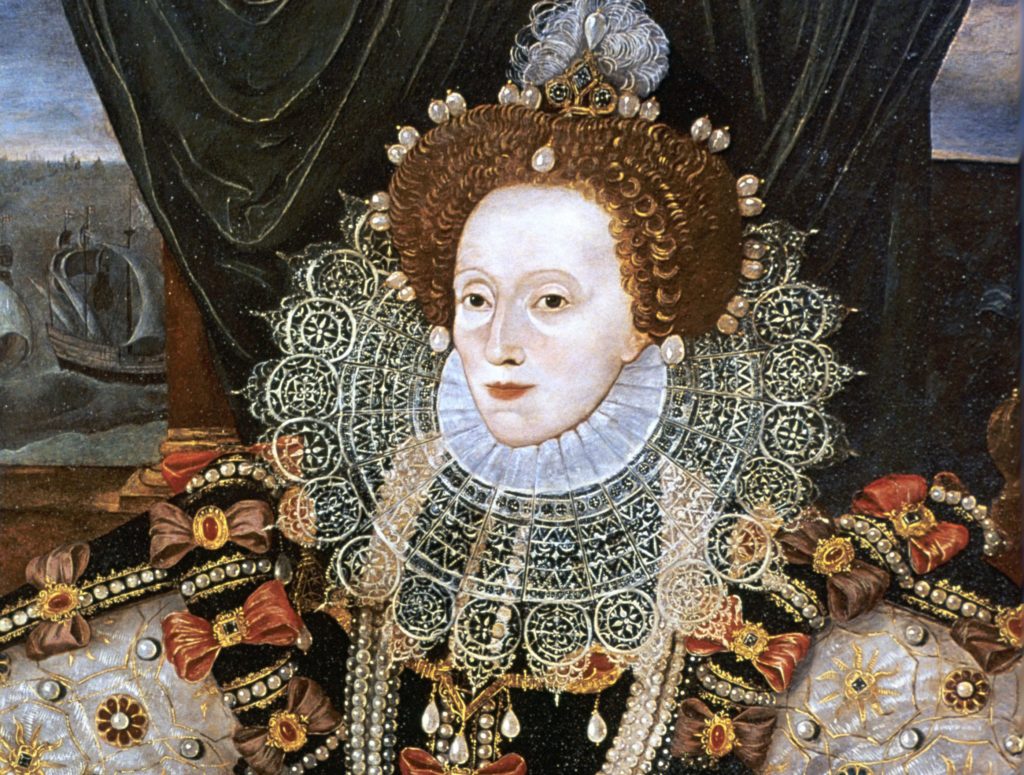Last updated on January 29th, 2023 at 08:52 pm
Queen Elizabeth I is one of the most famed monarchs in European history. This woman led the English resistance to Spain during the Armada crisis of 1588 when the Spanish nearly conquered the country.
Countless books and many films in recent times have been to be produced on the monarch. But one of the lesser-known facts about Elizabeth is that her death might have been owing to her beauty regimen. Here we examine whether her makeup killed Elizabeth.

The life of Elizabeth Tudor
Elizabeth Tudor was born in 1533, the daughter and only child of the union of King Henry VIII and Anne Boleyn. Given her father’s complicated marital life, her place in the line of succession to the English throne was never clear.
Still, the premature deaths of her younger half-brother, King Edward VI, in 1553 and her older half-sister, Queen Mary I, in 1558, left her as Henry’s only surviving legitimate child and paved the way for Elizabeth to become the queen that year.
She would reign for 45 years down to 1603, making her one of England’s longest-reigning monarchs. Despite being a prevaricating individual, who rarely made firm decisions and seemed interested only in balancing the government’s budgets, Elizabeth gained an enormous position in English nationalist historiography as the queen in whose reign England began its ascent to empire.
The first major colonies were attempted in Ireland and North America, and voyages of exploration were undertaken overseas.
Abroad, England faced the might of the Spanish Empire in a war between 1585 and 1604 and led the Protestant cause across the continent. At home, Shakespeare, Edmund Spenser, and Philip Sidney, the giants of the English Renaissance, were patronized by figures at the Elizabethan court.
The Vanity of Queen Elizabeth
Now one might think it incongruous to suggest that there was any foul play at work in the death of a monarch who lived to be 69 years of age, a higher-than-average life length by sixteenth-century standards.
But the possibility is less unlikely than one would think. Firstly, let’s examine Elizabeth’s fascination with makeup and trying to look eternally young.
Elizabeth never married, though she was courted by many individuals, including some of the most eligible bachelors from Europe’s nobility, notably Francis, Duke of Anjou, and Alencon, a member of the French royal family and the brother of King Henry III of France.
Moreover, at her court, it became standard practice for male courtiers, such as Walter Raleigh, to find favor with her by appealing to her vanity, even as she aged.
However, Elizabeth never married, and she became known as the Virgin Queen. The state of Virginia in the United States was even named after her in this way.
In keeping with this image of herself, Elizabeth tried to retain her youthful appearance as she grew older. And over the years, this increasingly amounted to applying ever more significant amounts of makeup to make her skin look white and her lips red. As she grew older, this became increasingly over the top.
When she died in 1603, she was said to have a layer of makeup over half an inch thick caked onto her face.
16th Century Makeup Was Deadly
In modern times this by itself would hardly cause one’s death. Still, in early modern Europe, many of the cosmetics which had been developed in Renaissance Italy and which had become fashionable across the continent during the sixteenth century contained harmful or downright dangerous.
For instance, the white powdery substance that she used to lighten her skin was known as ‘Venetian ceruse’, a substance that contained heavy amounts of lead. Lead exposure, over time, has disastrous health impacts.
As though this was not bad enough, a cinnabar substance was used to make a lipstick in the sixteenth century, giving lips a reddish tinge. This cinnabar is toxic and is essentially a mercury sulfide mineral.
Mercury poisoning creates a very wide range of health problems, varying from the physical to the neurological. Moreover, lead, and mercury were the two most prevalent toxic substances in the different cosmetics Elizabeth increasingly caked her face and lips within the 1580s and 1590s. Other poisonous substances, such as arsenic, were used in early modern makeup.
Did Queen Elizabeth’s Makeup kill her?
Having established that Elizabeth’s beauty regimen was lethal, we should next ask whether or not there is any clear evidence that she died of lead or mercury poisoning.
The answer is unclear. By the late 1590s and early 1600s, her mental state was often extremely erratic, which might indicate issues associated with poisoning from these substances. But it isn’t easy to know.
Elizabeth had enough reasons to be erratic during these years, notably a massive rebellion in Ireland, a war with Spain, and an attempted coup by one of her former court favorites, Robert Devereux, second Earl of Essex. Moreover, the deaths of many individuals she had known all her life in the 1590s had left her isolated and increasingly depressed by the early 1600s.
No autopsy was performed when Elizabeth died at Richmond Palace on the 24th of March, 1603. She had been bedridden for days, but given her age, no foul play was suspected, and consequently, no investigation was carried out.
Moreover, those in charge were too busy paving the way for King James VI of Scotland to come south to London and succeed Elizabeth as King James I of England to pay any attention to the queen’s death. Her body was left lying on her deathbed for several days before plans were initiated for her funeral.
All of this has left historians speculating as to her cause of death. One possible source was a severe infection brought on by the fact that she had refused to remove her coronation ring for 45 years since 1558. By early 1603 this had grown into her flesh, and her doctors insisted on surgically removing it about a week before her death.
Perhaps the infection killed her. In addition, there were possible symptoms of cancer, streptococcus, and pneumonia. It is ultimately impossible to determine whether Elizabeth’s makeup killed her, but there is no doubt that it must have caused her considerable harm over the years.
Even if Elizabeth’s death was caused by something else, the damage to her system wrought by lead and mercury poisoning might have been a secondary cause in the ultimate decline and death of the last of the Tudor monarchs.

